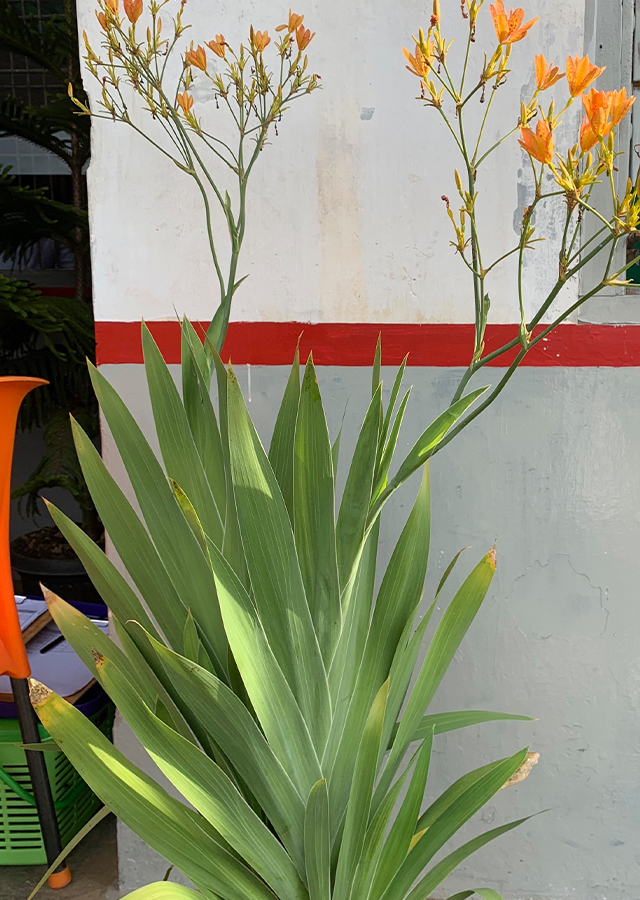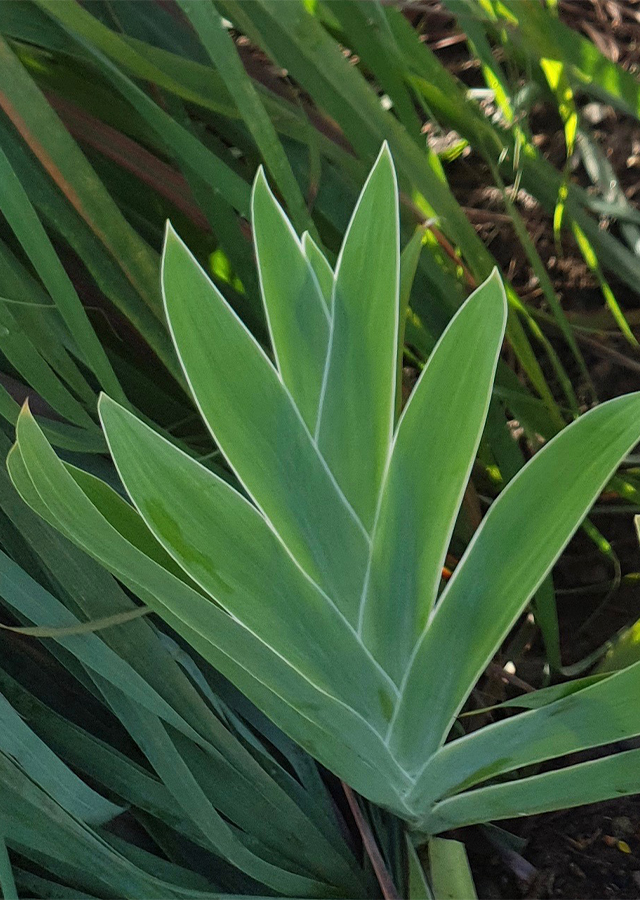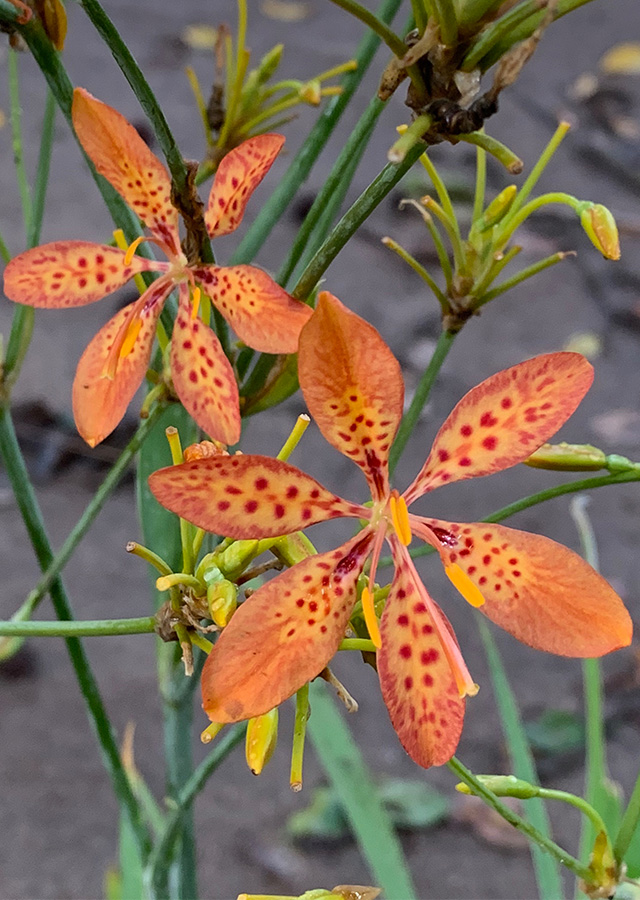Blackberry lily
Iris domestica (L.) Goldblatt & Mabb.
Iridaceae
Location in our garden
Principal



Synonym
Belamcanda chinensis (L.) Redouté
Ferraria crocea Salisb.
Ixia chinensis L.
Habitus
Herbaceous. An erect perennial rhizomatous herb with a thick creeping rootstock, growing up to 1.5 m tall
Part Used
Leaves
Flowers
Roots
Rhizome
Growing Requirements
Full Sunshine
Need Shade
Habitat
Forest
Coastal
Roadside
Shrublands
Grassland
Overview
Blackberry lily is native to China and also likely to be native to Japan, Korea, Taiwan, and the Far East of Russia. The plant is commonly used in traditional Chinese medicine. Through its use as an ornamental, it has been widely introduced and cultivated, mostly in temperate and subtropical areas, including in North and South America and the Caribbean, also in Sweden, the UK, and Australia.
Vernacular Names
Waan haangchaang (Thailand), Jiao jian cao (Chinese), Abaniko (Tagalog-Phillipines), Hi-ogi (Japanese), Fleur-leopard (French), Leopardenblume (German), Balamtandam (India), and Brojo lintang (Indonesia).
Agroecology
Blackberry lily grows in grasslands, pastures, woodland clearings, disturbed limestone glades, rocky outcrops, hillsides, fallow fields, roadsides, coastal plains, sandy meadows, savannas, forest edges, scrublands, and near railroads and old homestead sites. The species is hardy, tolerating brief temperature episodes of as low as -15 °C. In a bright sunny position or light shade, it needs reasonably rich sandy or loamy soil. Plants grow best in areas with hot summers that are long.
Morphology
- Rhizomes - below ground level, horizontal, flesh usually orange.
- Stem - usually 3-5-branched.
- Leaves - 2-ranked, strongly imbricated, narrowly lanceolate, sword-shaped, 40-60 cm long, 2.5-4 cm wide, and overlapping at the base.
- Flowers - the inflorescence is terminal and upright, dichotomously branched. Spathes are ovate to ovate-lanceolate, approximately 1 cm long, multiple and pedicelled, 4-6 cm wide, opening 1 or 2 at a time. The perianth-tube is very small, and the segments are narrowly elliptical, extending outward, yellowish, reddish-yellow with reddish spots within. Obovoid, membranous and loculicidal capsules are capsules.
- Seeds - nearly spherical in shape, with lax, black, 4 mm in diameter, and shining testa.
Cultivation
- Generative propagation is by seeds. Seeds are best sown as soon as it is ripe in a container or a nursery seed bed. Pre-chill stored seed for 7 days and sow in a nursery seedbed or container. The seed germinates in 2-8 weeks at 20 °C.
- It can also be vegetatively propagated by dividing the rhizomes.
Chemical Constituents
Flavonoids, terpenoids, quinone, phenolic compound, ketones, glicoside skekanin, belamkandin, and iridin.
Traditional Medicinal Uses
Medicinal Uses
- Analgesic, antibacterial, antimicrobial, anti-inflammatory, depurative, expectorant, febrifuge, pectoral, purgative, stomachic, and tonic root. In particular, it is used in the treatment of inflammation of the throat and upper respiratory tract, including acute laryngitis, acute tonsillitis, glottis oedema, asthma, and profuse sputum cough. It is also effective against a variety of pathogens that are bacterial, fungal and viral, and has also been used as a snakebite antidote.
- Rhizomes are used as expectorants.
Traditional Uses
- Root juice is used to treat liver complaints in Nepal, where it has the added advantage of improving your appetite.
- In traditional Chinese medicine, it is used for pharyngitis, tonsillitis, cough, wheezing, mumps and bronchitis, blood purification, facial and breast tumors.
Part Used
Reference Sources
- CABI. (2020). Invasive Species Compendium. Iris domestica (blackberry lily). https://www.cabi.org/isc/datasheet/62815878. 21-10-2020.
- Fern, K. (2014). Useful Tropical Plants. Iris domestica. http://tropical.theferns.info/viewtropical.php?id=Bixa+orellana. 21-10-2020.
- Stuart Xchange. (2015). Philippine Medicinal Plants. Abaniko. http://www.stuartxchange.com/Abaniko.html. 21-10-2020.


